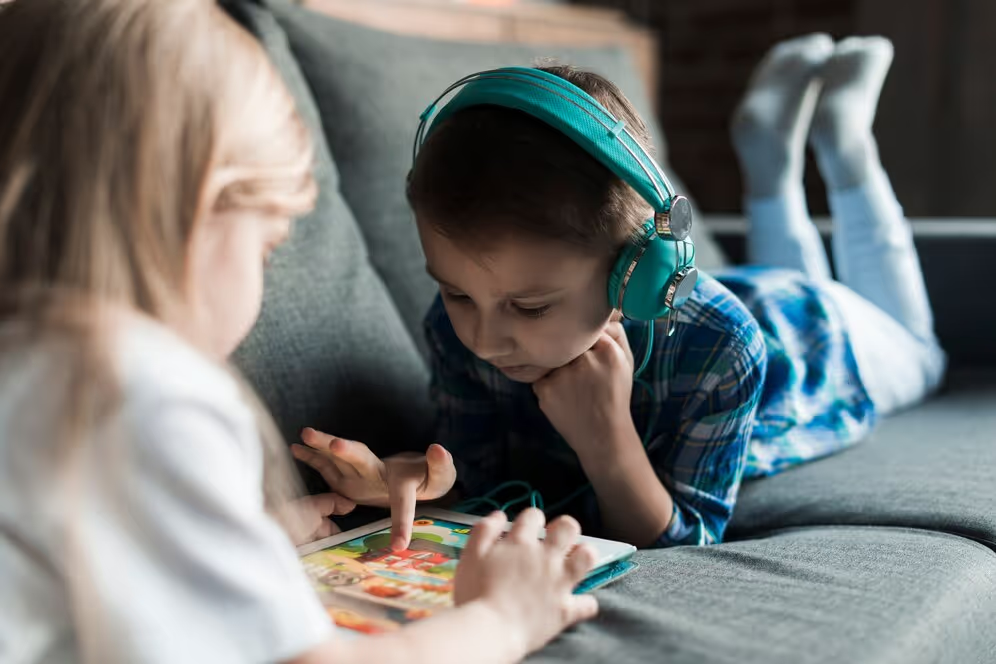Autism and Deafness: Strategies & Therapies for Children

Understanding Autism and Deafness
Prevalence in Children
Understanding the intersection of autism and deafness is vital for parents and caregivers. Studies indicate that the prevalence of autism in children with hearing loss is significantly higher than that of children with normal hearing. Research shows that the prevalence ranges from 4% to 9% among children who are deaf or hard of hearing, which is approximately three times greater than the general population's rate of autism, estimated at around 1.5% to 2% [1].
Unique Challenges Faced
Children who are both autistic and deaf face unique challenges that can complicate communication and social interactions. The lack of auditory input can hinder language development, making it difficult for these children to grasp social cues and communicate effectively. Moreover, the dual diagnosis can lead to increased frustration for both the child and parents, as traditional methods of communication may not be effective.
Some specific challenges include:
- Limited Speech and Language Skills: Many children with autism have speech delays, and when compounded with hearing loss, this can severely limit their ability to express themselves or understand others. The National Institute on Deafness and Other Communication Disorders (NIDCD) highlights the importance of tailored communication strategies.
- Social Isolation: The combination of autism and deafness can lead to difficulties in forming relationships, as social interactions may be more challenging to navigate. Children may struggle with understanding social norms and responding appropriately.
- Educational Barriers: Standard educational approaches may not be sufficient for children with both conditions. Individualized strategies are essential to cater to their unique learning needs [2].
Supporting children at this intersection requires a comprehensive understanding of both conditions. Parents can explore various educational and therapeutic approaches tailored to meet the needs of their child, ensuring a supportive environment for growth and development.
Communication Strategies
For parents of children navigating the complexities of both autism and deafness, effective communication strategies are crucial. These methods can significantly enhance the ability of individuals to express themselves and connect with others.
Alternative and Augmentative Communication (AAC)
Alternative and Augmentative Communication (AAC) encompasses a range of tools and techniques that support communication for those who may struggle with traditional verbal methods. AAC can include everything from picture boards to sophisticated software that converts text to speech. This approach allows individuals to communicate in ways that suit their unique needs [3].
Implementing AAC strategies can empower children to convey their thoughts and feelings effectively.
Visual Supports and Social Stories
Visual supports and social stories are essential tools that can simplify complex concepts and routines for children with autism and deafness. Visual aids can include charts, graphs, and photos that provide context and enhance understanding. Social stories, on the other hand, are narrative tools designed to help children learn about social situations and expected behaviors through relatable scenarios. These strategies help bridge the communication gap and reduce anxiety in new situations.
Incorporating these supports into daily life can foster a better understanding of communication cues.
Sensory Integration Techniques
Sensory integration techniques are vital for addressing the sensory processing challenges often faced by children with autism and deafness. These methods involve creating an environment that accommodates individual sensory needs, thereby enhancing engagement and communication. Techniques can include sensory rooms, calming activities, and the use of fidgets, which help children manage their sensory experiences effectively [2].
By employing these strategies, parents can create a supportive atmosphere that encourages communication and connection for their children.
Educational and Therapeutic Approaches
Educational and therapeutic strategies are crucial in providing support for children with both autism and deafness. These approaches help foster development, communication, and social skills.
Individualized Education Programs (IEPs)
Individualized Education Programs (IEPs) are tailored plans designed to meet the specific educational needs of children with disabilities, including autism and hearing loss. IEPs outline personalized goals and the services required to achieve them, ensuring that the child receives appropriate support in educational settings.
In the United States, IEPs are mandated by the Individuals with Disabilities Education Act (IDEA), which guarantees children with disabilities the right to a free appropriate public education. Parents play a significant role in developing the IEP, collaborating with educators and specialists to create a plan that aligns with the child's strengths and challenges.
For more information on autism and educational resources, visit Americas first autism certified city.
Applied Behavior Analysis (ABA)
Applied Behavior Analysis (ABA) is an evidence-based therapeutic approach that focuses on improving specific behaviors and skills while reducing undesired behaviors. ABA uses techniques based on the principles of learning theory, making it effective for children with autism and deafness.
ABA programs are highly individualized, often incorporating positive reinforcement to encourage desired behaviors. They can be implemented in various settings, including schools, homes, and clinics, and can cover a wide range of skills, from communication to daily living activities.
For more on activities that support social skills, check out activities for autistic teenagers.
Speech and Language Therapy
Speech and Language Therapy is essential for children with autism and hearing loss, as it helps improve communication skills. Therapists work with children to develop their ability to express themselves verbally or non-verbally, depending on their individual needs.
Therapy may include various techniques, such as using visual supports, sign language, or Augmentative and Alternative Communication (AAC) devices. Tailoring the approach to each child's preferences and abilities is vital for effective communication development.
For additional insights into communication tools, explore our article on autism and deafness.
These educational and therapeutic approaches play a vital role in enhancing the quality of life for children with autism and hearing loss, offering them the tools and support they need to thrive.
Role of Assistive Technologies
Assistive technologies are increasingly essential in supporting individuals with autism and deafness. These technologies enhance communication, promote independence, and improve overall quality of life for those facing these challenges.
AI Integration
Artificial Intelligence (AI) is playing a transformative role in the realm of assistive technologies for individuals with neurodevelopmental disorders like autism. AI-driven solutions contribute significantly to rehabilitation, independence, and overall well-being by addressing various challenges, including communication difficulties and mobility issues.
AI can personalize educational experiences and therapeutic interventions, adapting to the unique needs of each individual. These advancements offer new avenues for interaction and support, paving the way for improved outcomes in both academic and social settings. For further insights into the implications of AI in autism, refer to our article on autism and parkinson.
Robotics and Wearable Devices
Robotics and wearable technologies are proving beneficial for individuals with autism and deafness. These devices can assist with daily tasks, provide reminders, and facilitate communication.
Wearable devices, such as smartwatches, can offer real-time support by providing alerts and notifications that help individuals navigate their environments more effectively. Robotics can aid in social skills development and provide companionship, thus enhancing emotional well-being.
The incorporation of these technologies allows for greater independence and confidence among individuals, which is crucial for their overall development. For ideas on engaging activities for autistic teenagers, check our list of activities for autistic teenagers.
Augmentative and Alternative Communications (AAC)
Augmentative and Alternative Communication (AAC) systems are fundamental in bridging communication gaps for individuals with autism and hearing loss. AAC encompasses a range of tools and strategies that enable individuals to express themselves effectively. This can include picture exchange systems, speech-generating devices, and sign language.
AAC systems can be tailored to meet the specific needs of each person, providing them with a means to communicate that aligns with their preferences and abilities. These communication strategies empower individuals, fostering greater participation in social interactions and daily activities. For more information on communication strategies, visit our article on autism and hearing loss.
The integration of these assistive technologies plays a vital role in improving the lives of individuals with autism and deafness, addressing the communication challenges that often accompany these conditions.
Diagnosis and Assessment
Diagnosing autism in children who are also deaf presents a unique set of challenges. It is essential for parents to understand these difficulties, as well as the tools available for assessment.
Challenges in Diagnosis
The traditional approach to diagnosing Autism Spectrum Disorder (ASD) relies heavily on behavioral observation and standardized testing. The most widely used test is the Autism Diagnostic Observation Schedule (ADOS). However, the ADOS is not valid for children with significant sensory impairments, including those with hearing loss. This limitation means that many deaf children may not receive an accurate diagnosis or may be misdiagnosed.
Commonly, pipelines for identifying autism in deaf and hard of hearing (D/HH) children often begin with screening tools. Yet, these tools, such as the Modified Checklist for Autism in Toddlers (M-CHAT) and the Social Communication Questionnaire, have demonstrated poor sensitivity and specificity in identifying autism in D/HH children. They can both overidentify and underidentify cases of autism [4]. This can lead to significant delays in receiving appropriate services and support.
Screening Tools
While screening tools exist, it is crucial to recognize their limitations. Below is a comparison of some commonly used screening tools:
The poor performance of these tools emphasizes the need for more effective assessment methods tailored to the unique needs of D/HH children. Recent advancements, such as automatic vocal analysis methods, have shown promise in screening for communicative disorders. These methods may help differentiate between children with ASD and those with hearing loss, providing a non-invasive option for clinicians [1].
Assessing Autistic Deaf Children
Assessing autistic deaf children requires a multifaceted approach. The Autism Diagnostic Observation Schedule, Second Edition (ADOS-2) and the Autism Diagnostic Interview, Revised (ADI-R) are considered "gold-standard" tools for autism assessment. However, the ADOS-2 specifically states that it was not intended for use with children with sensory differences, such as D/HH children, as it relies heavily on verbal communication [4].
In practice, many deaf children may not receive a diagnosis of autism until later in life, especially since some indicators of deafness resemble those of autism [5]. Parents should advocate for comprehensive assessments that take into account both autism and deafness, ensuring that their child receives the appropriate support and resources.
Understanding the complexities surrounding the diagnosis of autism and deafness is crucial for parents navigating this journey. By being aware of the challenges and available assessment tools, they can better advocate for their child’s needs and pursue effective interventions.
Emotional Health and Wellbeing
Challenges Faced
Deaf children with autism often encounter unique challenges that can impact their emotional health and wellbeing. These challenges can manifest as difficulty in expressing emotions and understanding social cues. All behavior serves as a form of communication; thus, what may appear as challenging behavior, such as meltdowns, often indicates unmet needs rather than intentional misbehavior. Parents may find it hard to interpret these behaviors, which can lead to frustration and confusion [5].
The lack of social skills and interactions can lead to serious repercussions, including lower employment opportunities, reduced independence, and heightened risks of mental health issues like anxiety and depression [6]. Understanding the roots of these challenges is essential for parents who seek to support their children effectively.
Developing Emotional Resilience
To foster emotional resilience in children with autism and deafness, parents can adopt several strategies. Building emotional awareness and coping skills is crucial. Activities that encourage expression, such as art or music therapy, provide outlets for feelings. Moreover, teaching problem-solving skills can empower children to manage their frustrations more effectively.
Support Plans and Legal Documents
Many deaf children with autism will have a support plan, which is a legal document outlining their special needs, educational placement, and the agreed-upon support. These plans are vital in ensuring that children receive the appropriate resources necessary for their development [5].
A well-structured support plan can include:
Parents should actively engage in the development of these plans to ensure they meet their child's needs. This collaboration can help create a supportive environment that fosters emotional health and wellbeing, allowing children to thrive both academically and socially. For further resources, consider exploring activities for autistic teenagers, which can provide additional avenues for social engagement and skill development.
References
[1]: https://www.ncbi.nlm.nih.gov/pmc/articles/PMC6723169/
[2]: https://www.abtaba.com/blog/autism-and-hearing-loss
[3]: https://www.ncbi.nlm.nih.gov/pmc/articles/PMC10817661/
[4]: https://www.ncbi.nlm.nih.gov/pmc/articles/PMC10271818/
[5]: https://www.ndcs.org.uk/information-and-support/childhood-deafness/additional-needs/deafness-and-autism/
Recent articles

How ABA Therapy Can Be Adapted to Different Learning Styles
Tailoring ABA Therapy to Match Children's Learning Preferences

The Role of Emotional Regulation in Autism Therapy
Understanding Emotional Regulation's Impact on Autism Therapy

How ABA Therapy Can Help with Adjusting to New Environments
Harnessing ABA Therapy for Seamless Environmental Transitions

How ABA Therapy Supports Executive Functioning Skills
Enhancing Cognitive Abilities Through ABA

The Role of Schedules and Visual Timers in ABA Therapy
Transforming Therapy: How Visual Tools Enhance ABA Practices

How to Recognize Progress and Success in ABA Therapy
Key Indicators of Progress in ABA Therapy


